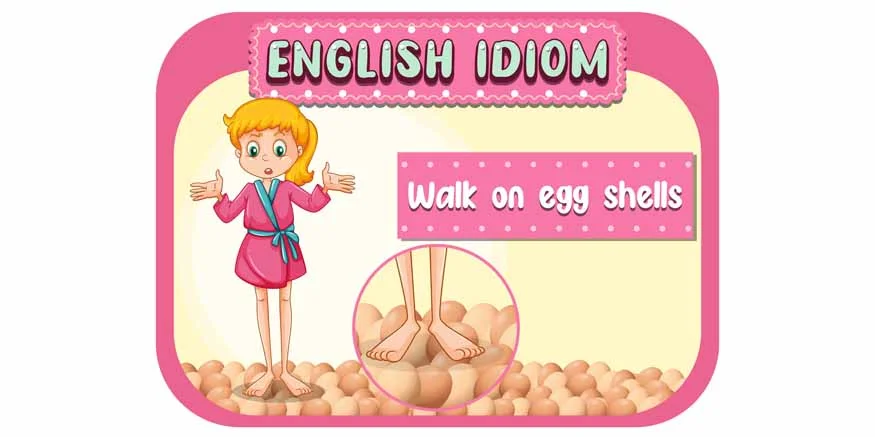Idioms are expressions that convey meanings different from the literal interpretation of individual words, often carrying cultural significance. In this blog, we will explore what idioms are, how to teach idioms to children, and some fun activities that make learning idioms enjoyable and its importance.
Also read: What is a Gerund Is a Gerund a noun or not?
Teaching Methods of Idioms:
What are idioms and how to teach them to children effectively.
- Start with Common Idioms:
- Visual Aids and Illustrations:
- Contextual Stories:
- Act Them Out:
- Incorporate Fun Games:
- Use Storybooks:
- Create Idiom Flashcards:
- Discuss Cultural Context:
- Relate to Personal Experiences:
- Create Idiom Art:
Begin with idioms that are commonly used in everyday conversation. These idioms often have clear meanings that children can easily understand.
Use visual aids and illustrations to help children visualise the meaning of idioms. Create simple drawings or find pictures online that represent the figurative meaning of the expression.
Share short stories or scenarios where idioms are used naturally. Providing context for the idioms allows children to understand when and how these expressions are typically used.
Encourage children to act out idioms to make the learning process more engaging. For example, they can “rain cats and dogs” by imitating rain falling with their fingers and adding toy cats and dogs to the environment.
Play games that involve idioms. Create a matching game where children pair the idiom with its correct meaning. Make it a competition or a collaborative effort to add excitement.
Choose storybooks that incorporate idioms. After reading, discuss the idioms used in the story and their meanings. This helps children understand idioms in context and increases their use of idioms.
Make colourful flashcards with idioms and their meanings. You can also include pictures to aid understanding.
Explain that idioms often have cultural roots, and their meanings can sometimes be linked to historical or cultural references. This adds depth to their understanding and encourages cultural awareness.
Connect idioms to children’s personal experiences. For example, if teaching “raining cats and dogs,” ask if they’ve ever experienced heavy rain and relate it to the idiom’s exaggerated imagery.
For the idiom “the ball is in your court,” children can draw a sports court with a ball, focusing on the concept of responsibility.
Also read: What are the 5 Typеs of Language Skills?
Importance of Idioms:
Let’s explore the importance of idioms.
- Enhances Language Skills:
- Encourages Critical Thinking:
- Cultural Understanding:
- Promotes Creativity:
- Improves Communication Skills:
- Enhances Literary Appreciation:
- Strengthens Social Skills:
- Builds a Love for Language:
Learning idioms expands vocabulary and language skills. It exposes children to creative expressions beyond literal meanings, enriching their language usage.
Understanding idioms requires thinking beyond the literal interpretation. This promotes critical thinking skills as children decipher the figurative meanings within various contexts.
Idioms often carry cultural connotations. Teaching them introduces children to cultural nuances, fostering an understanding of language within a broader cultural context.
Idioms are examples of creative language. Exploring these expressions helps children appreciate the imaginative aspects of language and express themselves more creatively.
Applying idioms correctly in conversation improves communication skills. Children who understand and use idioms in their language are better equipped to communicate clearly.
Learning idioms increases one’s understanding of literature. When children read idioms in stories and poetry, they develop a deeper appreciation for literary devices.
Understanding idioms aids in social interactions. Children who grasp these expressions are better equipped to navigate conversations and comprehend the nuances of communication.
Implementing idioms in a fun and engaging manner fosters a love of language. Children become more interested in the variety of expressions in their native language.
Also read: International Olympiad of English Language (iOEL)
Fun Idiom Activities:
Here are some interesting and fun idiom activities for children.
- Idiom Charades:
- Idiom Bingo:
- Idiom Puzzles:
- Idiom Memory Game:
- Idiom Story Writing:
- Idiom Song Lyrics:
- Idiom Illustration Book:
- Idiom Board Game:
- Idiom Puppet Show:
Play a game of charades with idioms. Children can act out the literal meaning of an idiom, and others guess its figurative meaning. It’s a fun and engaging way to strengthen understanding.
Create bingo cards with various idioms. Call out the literal meanings, and children mark the corresponding idioms on their cards. It’s a playful way to review idioms.
Develop puzzles where children match the idiom with its correct meaning. Cut out pieces with idioms and their meanings, and children assemble the puzzle by connecting the correct pairs.
Play a memory game with idiom cards, writing the idiom and its meaning on separate cards. Children turn the cards to find matching pairs.
Encourage children to write sentences or short stories using idioms. This activity not only enhances understanding but also encourages creative writing.
Select a song with idiomatic expressions. Listen to the lyrics, identify the idioms, and discuss their meanings. Children can even create their own songs using idioms.
Have children create an illustration book where each page represents a different idiom. They draw the literal and figurative meanings, making a personalised idiom dictionary.
Design a board game where players move through spaces based on their understanding of idioms. Include challenges or questions related to idioms for added excitement.
Allow children to make puppets and perform a show using idioms. This not only fosters creativity but also reinforces the meanings of the idioms they use.
Also read: How English Language Is Shakespeare’s Language
Examples of Idioms:
Here are some important examples of idioms.
Bite the Bullet:
- Literal: To bite on a bullet.
- Figurative: To endure a painful situation with courage.
Hit the Hay:
- Literal: To physically hit the hay.
- Figurative: To go to bed or go to sleep.
Piece of Cake:
- Literal: A piece of cake.
- Figurative: Something very easy to do.
Hold Your Horses:
- Literal: Holding onto horses.
- Figurative: To wait or be patient.
Kick the Bucket:
- Literal: Kicking a bucket.
- Figurative: To pass away or die.
Break a Leg:
- Literal: Breaking a leg.
- Figurativ</h3> Wishing someone good luck.
Cost an Arm and a Leg:
- Literal: Something costing body parts.
- Figurative: Something very expensive.
The Ball Is in Your Court:
- Literal: A ball in a sports court.
- Figurative: It’s your time to do something.
Under the Weather:
- Literal: Being physically under the weather.
- Figurative: Feeling unwell.
At EuroSchool, we understand the importance of incorporating idioms into language learning to enhance children’s linguistic proficiency while making the learning process enjoyable. These expressions add layers of creativity and variety to communication, resulting in comprehensive language fluency skills.









